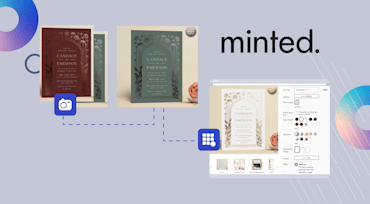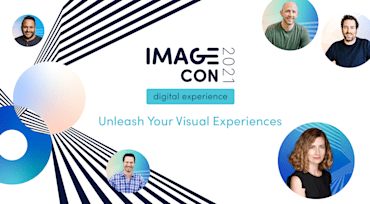Most business buyers prefer to research purchase options online, as do many shoppers. No wonder online retail sales in the U.S. rose by 32.4% in 2020—an impressive gain of $105 billion.
For B2B and B2C businesses, text-heavy websites are no longer adequate in attracting shoppers. Instead, engaging visual media—spin images, videos, 3D models, augmented reality—are becoming a must for conveying eye-catching details and differentiators about products or services.
The recent Forrester report Use Rich Media to Drive More B2B Conversions describes the various types of rich media and the ways in which visuals institute confidence for purchases, simultaneously boosting connections with shoppers. Below are our key takeaways.
Visual Media Is Highly Effective for Engaging With Users
By delivering rich visual media to all viewing devices in promotion of products or services, businesses render their websites more interactive and appealing, boost the user experience, and increase traffic and sales.
Additionally, businesses would be wise to make use of advanced visual-media formats to pass on to shoppers helpful information that differentiates their brand. Consider, for example, replacing photos with 3D images or offering video or podcasts to inspire product adoption and new use cases.
Visual Media Builds Strong Connections
Videos can bring about an emotional connection or convey product features in a way not achievable with text alone. Hence why leveraging visual media to reinforce marketing messaging is a smart strategy.
Concurrently, take advantage of video to build trust with the target audience. As inspiration, watch Volvo Trucks’ two-minute footage on its dynamic-steering option, whose major benefit—reducing neck and back pain—profoundly resonates with truckers.
Explainer videos are another effective promotional tool for retail. Be concise and clear as you spotlight the benefits of your product or service.
Cloudinary Empowers Businesses to Easily Deliver Digital Experiences
Are you ready to use visual media to engage with and convert audiences, but are not sure where to start?
Cloudinary’s media-experience platform overcomes all the major hurdles that hamper the delivery of digital experiences. To help you meet the ever-changing media requirements and eliminate resource bottlenecks, we do the following:
Automate the media workflow. Traditionally, project managers and developers have had to manually create multiple versions of media assets to fit various platforms and devices. With Cloudinary’s intuitive APIs, widgets, and SDKs, those folks can store, transform, optimize, and deliver media with ease, saving valuable time and effort for other tasks.
Deliver assets fast at scale. Brands, notably global organizations with customers all over the world who speak different languages, have countless assets to distribute. With Cloudinary, businesses—B2B, B2C, or DTC—can deliver assets to audiences worldwide in the most efficient way possible by automating publishing workflows with AI-based transformations.
Establish a single source of truth. A tough challenge during the productization process is maintaining clear communications across all touchpoints. The Cloudinary platform acts as a streamlined and organized home for businesses’ digital assets across teams, systems, and channels, hence transparency at all fronts.
No matter your industry, Cloudinary’s enterprise-grade, media-experience platform is ideal for managing, optimizing, and delivering visual media. By capitalizing on AI, automation, and advanced image- and video-processing capabilities, we eliminate the hassle of manual tasks and efficiently deliver attractive visuals at scale.
Want to learn more? Download and read the full Forrester report.






